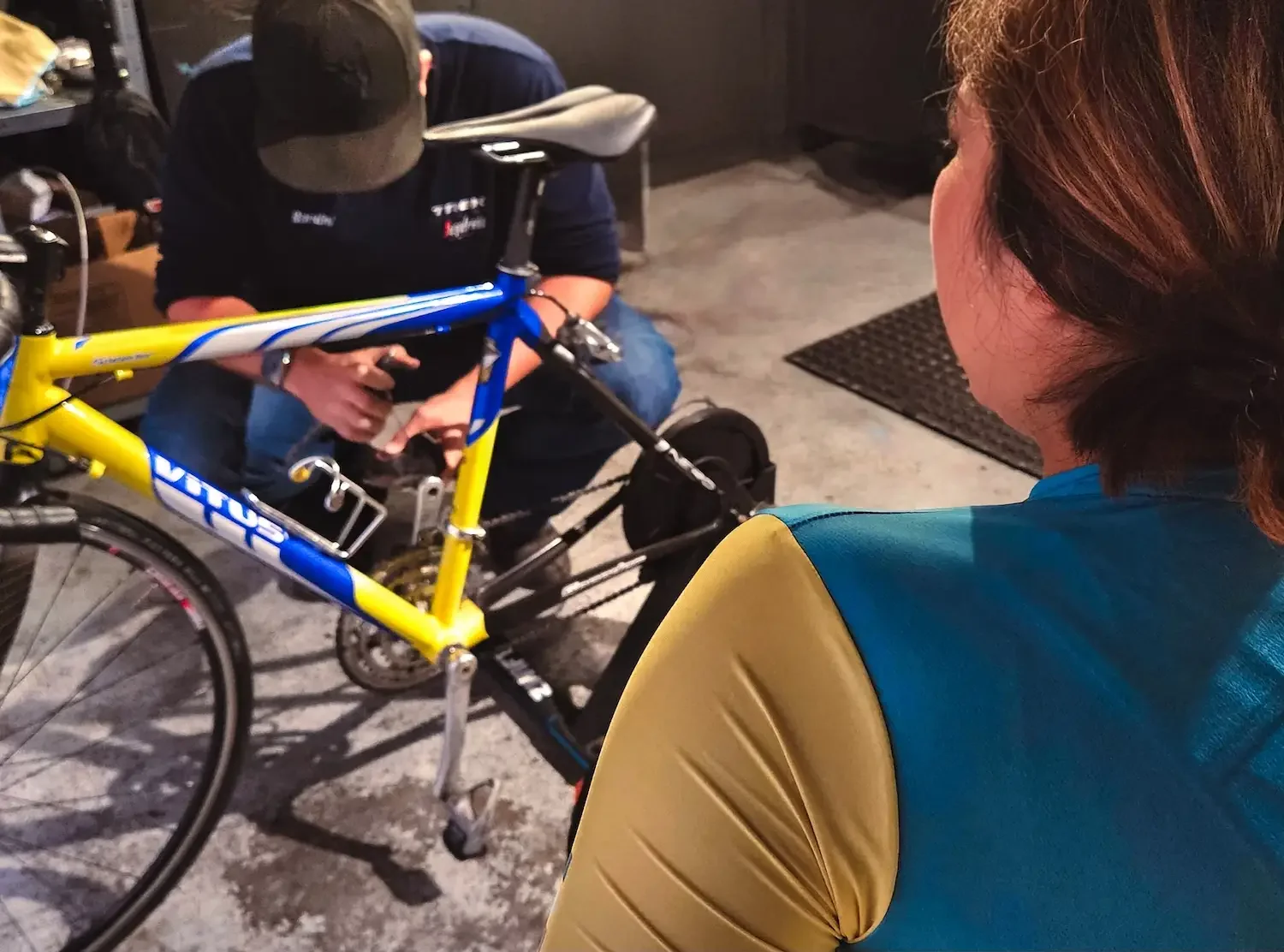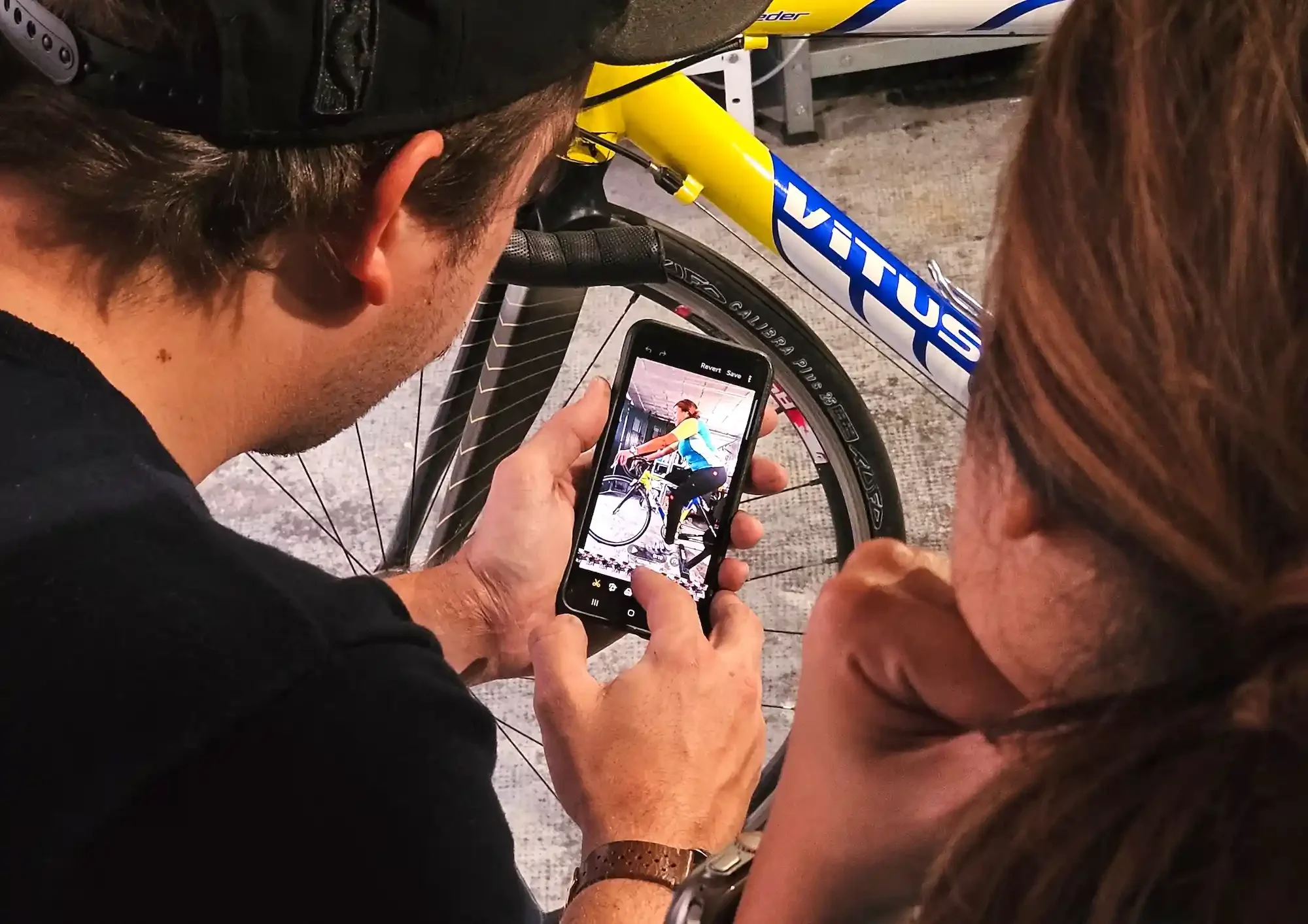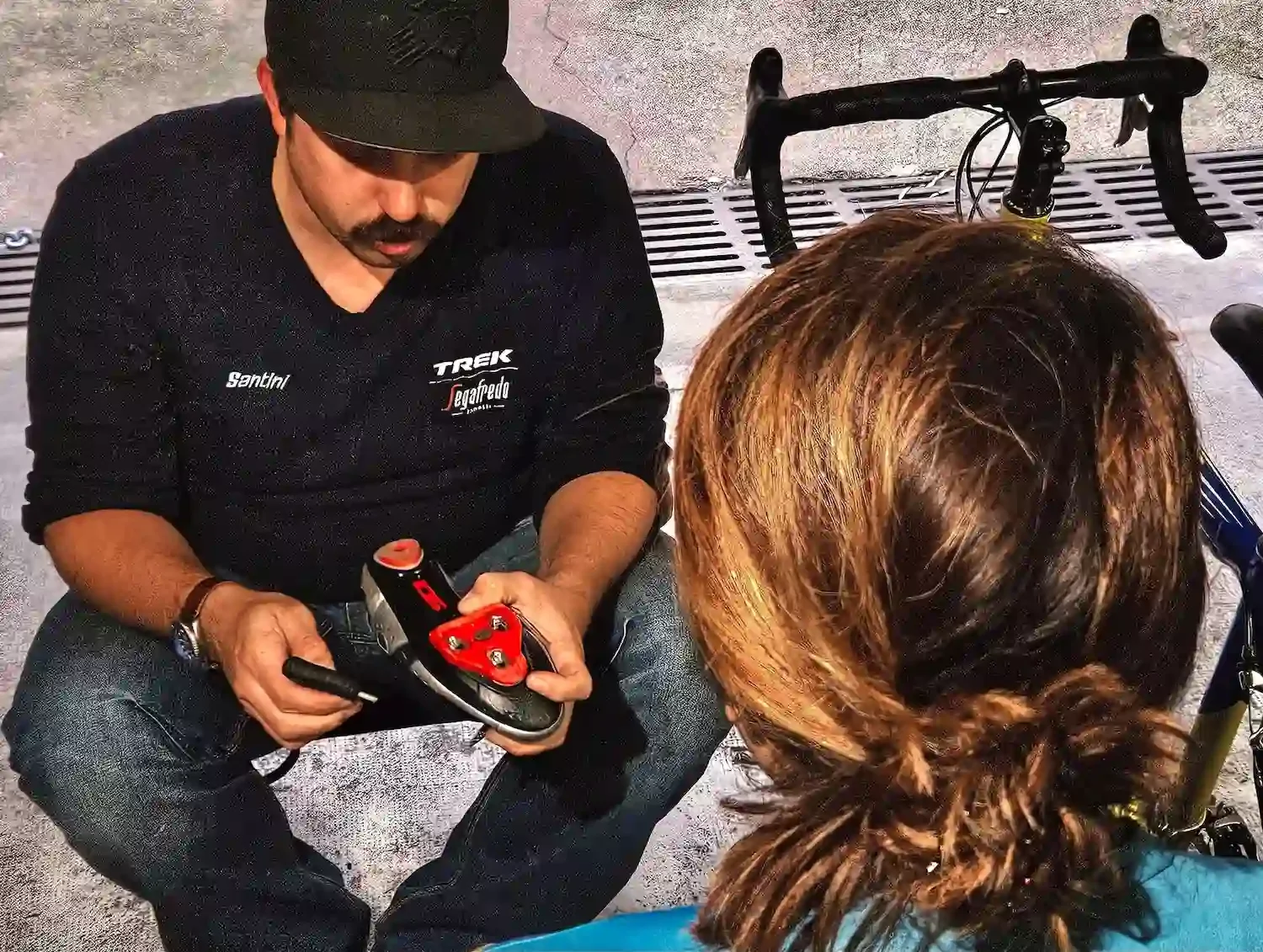The Casual Rider’s Guide to Bike Fits: 2026
Even for casual riders, bike fitting is usually a ride-changing experience.
If you’ve ever shared a car with someone, or driven someone else’s car, you’ve likely needed to make a few adjustments before turning the engine over and hitting the road. There are seat adjustments, both forward and vertical. The rear view mirror likely needs tilted, and the side mirrors too. Sometimes, the headrest, seat belt, and even steering wheel need a bit of tweaking.
These adjustments are both for safety and comfort. We can think about bike fitting in the same way.
Now, you might say, “But bikes come in different sizes. I purchased my size.” While this is true, bikes, like most things, are not one-size-fits-all. It would be nice, but it really just isn’t the case.
The human body comes in all shapes and sizes, down to a skeletal level, and bikes really just don’t.
On top of that, bike design as we know it today, including most parts and equipment (handlebars, saddles, etc.) was product-tested and designed for the biologically male body. This is pretty good news for biological males, but it can be frustrating for the biologically female body - and even unpleasant at times.
In this guide, we’re going to take a look at what a bike fit (étude posturale in France) is and why even the casual rider or commuter should consider one.
What is a bike fit?
In the simplest terms, a bike fit is adjusting the bike to meet goals and suit your anatomy.
Professional and elite cyclists have long benefited from bike fits in order to capitalize on their power, become more efficient, and feel more comfortable, avoiding aches and pains so they can train longer and more often.
Typically, you have an appointment with a bike fitting specialist who will make adjustments to your bike and give you advice and suggestions to help your ride feel more comfortable.
The right bike fit can help a rider, no matter their level of fitness, get more out of their bike.
Bike fits…
Help the rider feel more comfortable on their bike.
This, in turn, can help riders ride for longer.
It can make the rider feel more confident.
It can also help prevent aches and pains on and off the bike.
Make the rider more efficient.
Through specific adjustments, your bike can be adjusted to help you get the most out of each pedal stroke - the ultimate use of your own physical power.
It’s the “work smarter, not harder” philosophy.
Adjustments, specifically to the saddle and cleats, can help riders push the most power possible without extra physical effort.
Help the cyclist ride more safely.
Adjustments can help riders maneuver their bicycles more safely. For instance, with handlebar adjustments, cyclists can sometimes better reach the brakes, which in turn helps prevent hand fatigue.
What adjustments are made in a bike fit?
What gets adjusted depends on the overall goal of the cyclist, how their bike currently works for them, pain points or concerns, and the cyclist’s anatomy.
Sometimes, just a few small tweaks are necessary. Other times, many adjustments need to happen, or even product swaps (one saddle for another, for example).
In bike fits, a professional bike fitter assesses your bike and your relationship with your bike holistically. While that can sound a little cheesy, it is the best way to approach it!
It isn’t about one tiny thing. A bike fit looks at the entire system and how everything is working together.
What happens in a bike fit
In a bike fit, you can expect to work 1-1 with a professional fitter. They are trained to help you feel the best on your bike, period, while helping to prevent fatigue.
During a bike fit, you need to wear your cycling kit and your cleats, and bring your bike with you.
You’ll have a conversation with the fitter where they ask you about your riding history - how much you ride, a bit about your bike, if you have had any injuries prior, or have any frequent aches and pains, what your goals are, etc.
Your bike will be propped up on a trainer, and you will be asked to “ride”. This allows the fitter to see you ride in real time.
At Paris Pedal Works, small stickers are put on three key joints: the ankle, outer knee, and hip. A video is taken where the angle of your pedal stroke will be mapped. Different companies might approach the fit differently, but getting an angle capture is very important.
The fitter will explain several different things to you, like what is currently happening when you ride your bike, where your power is being pushed, and more.
In a bike fit, you can expect an experienced fitter to look at a few different things.
For instance:
A bike fitter should ask you about injuries, aches, and pains
But they aren’t necessarily medical professionals
Part of a good bike fit is working together to address any pain points. Keep in mind that, unless explicitly stated, most bike fitters are not doctors or medical professionals, and thus cannot give medical advice or treatment.
They are trained to fit your bike to you, so it can be helpful for them to know if you’re uncomfortable on your bike, or if you tend to prefer a specific ankle, for example, due to a prior injury.
If you have aches, pains, injuries, etc., it is important to consult with your physician or general care provider.
Your cleat position will be assessed
During your bike fit, an experienced fitter will assess your cleats. If you are a casual rider or commuter and don’t ride with cleats, do not fret. The fitter will talk with you about your pedals, the shoes you wear, etc.
Usually, you’ll remove your shoes so the fitter can take a look at your cleat, any padding or support you currently have inside, and where the cleat itself is positioned on the bottom of the shoe.
If necessary, they will make adjustments to your cleat. They may also recommend sole support or other brands or models of shoes, depending on your specific situation.
Your saddle position and height will be optimized
One of the most common adjustments made in a bike fit has to do with the saddle, or bike seat. While it is surprising to many, most casual riders’ seats are too low. When your saddle is too low, it can throw off your entire fit, causing:
An uncomfortable ride.
Inefficient power transfer (meaning you’re not getting the most out of your pedal stroke).
Early fatigue and difficulty on longer rides, or rides with elevation.
Your fitter will chat with you about your saddle height, as well as its positioning. They may even talk to you about the specific seat and other options.
Your handlebars will be assessed
An integral part of your bike fit is your handlebars. Handlebars that are not positioned correctly for you can cause all sorts of issues, from uncomfortable riding to even hazardous conditions, like being unable to reach and grasp your brakes effectively.
During your fit, your fitter will ask you about how you feel on your handlebars. They’ll also assess your ability to reach your bars and safely shift and brake. If needed, your fitter will adjust the handlebars to best suit you.
Like other parts of the bike, they may even suggest other bars.
You’ll receive personalized advice and suggestions
On top of any physical adjustments made to your bicycle, you’ll receive personalized advice and suggestions. During your fit, you’ll have plenty of time to chat one-on-one with your fitter, ask questions, and have discussions regarding your bike, riding, and anything else related that comes to mind.
This is your moment to make sure all of your worries are addressed, as well as ask for expert advice.
What happens next
After a bike fit, you will take your bike home with you, and you will be ready to hit the pavement, unless you and your fitter have decided to replace some parts. In this case, you may need to come back to have new parts delivered and installed.
Regardless, your bike should be ready to ride at least to some extent, if not fully.
If several adjustments were made, it might take you a few days to get used to your new bike riding position, as it might be higher up, more forward positioned, or even further back.
Many bike shops, including Paris Pedal Works, offer a free follow-up, 4-6 weeks out. This allows you to really get to know your new bike position and make sure that it’s working for you.
Bike fit FAQs
-
A bike fit is a professional service that helps riders feel more comfortable and be more efficient on their bicycles. This is done through adjusting the bike to the client’s anatomy.
-
Anyone who rides a bike should consider getting a bike fit, especially if they’re feeling uncomfortable while riding, they’re experiencing fatigue, or feel like they can’t operate their bicycle safely.
-
It’s a nice thought, but it isn’t recommended to try to do your own bike fit. Even experienced bike fitters have someone else adjust their fit for them.
-
Different companies charge different amounts. It can vary greatly, so it’s best to check the bike shop or fitting service near you.
-
A good bike fit means that you feel comfortable, safe, efficient, and capable while riding.




